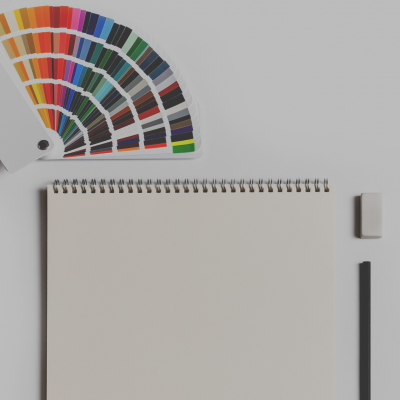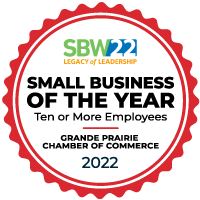All about Canadian copyright law, and when and where you can use copyrighted material.
Disclaimer: This isn’t legal advice! Copyright law is complex, and the only person qualified to give you a reliable information is a lawyer.
One of the most common questions I get from clients is “Can I use this picture I found on Google Images?” Unfortunately, there is no easy answer for this question. Copyright law is a vastly complicated topic, but a little knowledge of it can save you a lot of trouble down the road.
Let’s start off with what copyright is.
Copyright, in its most basic form, is a property right. Just like you can own a pair of shoes, you can own a photograph of a tree that you’ve taken. But more than owning the physical copy of the photograph (the paper it’s printed on), you own the expression or idea behind the picture you’ve taken.
In Canada, copyright is automatically applied to all works as soon as they are stored in a tangible format, such as printed on paper or saved to disk, without the creator having to do anything extra. For a copyright to be valid in Canada, the creator must be a Canadian citizen or a member of a nation that has an agreement regarding copyright with Canada [1]. So with that picture of the tree you took, you automatically own all the rights associated with it under the Copyright Act, and are free to use and distribute it however you please.
How does this affect images you find online?
So, if we understand that copyright is automatically applied, then it would stand to reason that most images you would find on Google images are unavailable for use, right? The answer is mostly yes, but there are exceptions to this.
There are copyright exemptions for specific purposes, primarily for educational or editorial use, such as:
- Criticism & review (e.g. film reviews, comical satire, etc.)
- News reporting
- Private study / educational use (e.g. writing a thesis paper)
There are also copyright exemptions for specific situations that allow educational, charitable, and religious organizations to use certain copyrighted materials as well.
What images can you use?
1. Images you’ve taken yourself
Images you take yourself are yours to own, provided that the image doesn’t contain any copyrighted materials in it (e.g. you take a picture of the picture of the tree somebody else took.)
The other situation to look out for is when specific people are in the photo, you will need a model release. A potential exception is a photo that contains a large group of people or bystanders on the street. This is called “street photography” and falls under a different category and can be a bit of a gray area. Again, a matter to discuss with lawyers if unsure.
It’s always best to ensure you have a signed model release for anybody who recognizably appears in the photograph. This form gives you permission to use their likeness in your photo, and may spell out terms of compensation for using their image (even if this means there isn’t any.)
2. Images created under hire (with appropriate ownership rights transferred)
You can also use images that you have hired someone else to create. When you hire a photographer or illustrator, you are either purchasing the copyright of the images from them, or purchasing the right to make and distribute copies of the images produced.
Make sure to clearly discuss the terms of copyright ownership for the photos before signing your contract. Many photographers by default retain the rights to their work and provide you a license to use the photos in specific situations. In some cases you can negotiate full ownership of the copyrights (a “buyout” of the rights) for an additional fee.
3. Get permission from the existing copyright holder
If you find an image that you absolutely fall in love with via Google Images, you can also always approach the copyright holder and ask for permission to use the image. Some might have no problem with giving it to you, while others may refuse, or require some form of compensation. Whatever the case is, make sure you get permission in writing so you can prove it later if needed. This should be on a written letter or form that is signed by the copyright holder.
4. Expired copyrights (public domain images)
Images with expired copyrights are also fair game. In Canada, copyright only extends to the life of the copyright holder plus 50 years after their death. So if the creator of an image passed away in 1950, any works he or she created would be usable without paying royalties. That being said, there are exceptions to this rule. For example, while any copyright on Mickey Mouse may have expired, the character is trademarked and not available for public use. Also, while the person who created them might have passed away, the rights to the image may be owned by a corporation, which may be ‘alive and well’ today. It pays to research these ahead of time and speak with a lawyer experienced in copyright to be sure.
5. Purchase or license stock images
This is a popular and affordable option for many small businesses to acquire high quality images. When you purchase an image from a stock photo site, you are not purchasing the image itself, but the rights to use it in specific circumstances. Some images can be licensed exclusively to your company, depending on what the stock company offers. Make sure you have the correct licence for the intended use, for example, you may need a different license to use the image on something you sell vs. just a banner for your website homepage.
A warning about modifying copyrighted images
One very touchy area is taking an existing image and altering it enough that it no longer resembles the original, and thus becomes its own, unique, expression. This can create a legal minefield, as the finished work may still be be considered a derivative work of the original. It could be a very lengthy and expensive legal process to sort issues like this out. Because of the risk and complexity involved, we generally recommend not doing this. Not to mention, the amount of work it takes to do it, often it’s easier to find a suitable stock photo or hire a photographer to get the image you want.
What if I still choose to use this image I found?
If you’re asking our company to put the image into your design without permission, we simply won’t do it. We can’t take on that risk. But if that’s what you choose to do on your own, we can’t stop you. But you should be aware that violating copyright law can result in you ending up in court. Possible outcomes may include you having to compensate the original copyright holder for your use of their work, as well as fines and the possibility of imprisonment.
With the prevalence of image based searched like Google Images and TinEye, it is becoming very easy for owners of images to find unauthorized copies of their materials being used. It’s not worth the risk.
Conclusion
Copyright law can be confusing, but with a little knowledge and research it is possible to avoid making mistakes that could get you in trouble. Take the time to look things over, and if you need clarification never hesitate to consult a lawyer who is familiar with copyright law regarding the matter.
Fascinated by this? For further reading, check out:
http://www.mapleleafweb.com/features/copyright-law-canada-introduction-canadian-copyright-act
http://www.cb-cda.gc.ca/about-apropos/mandate-mandat-e.html
http://en.wikipedia.org/wiki/Copyright_law_of_Canada










